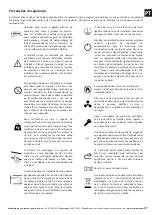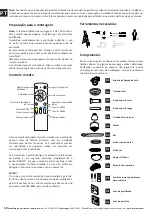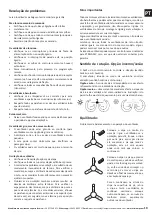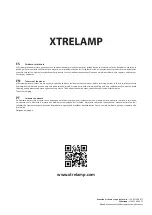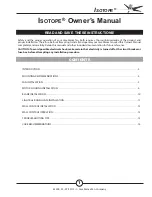
EN
Customer service and technical support:
+34 927 348 671 -
Whatsapp:
+34 655 89 02 17
Email:
www.xtrelamp.com
15
Rotation direction: summer and winter
The sliding switch controls the direction, whether clockwise
or counterclockwise.
Summer option/down
- he downwards air current creates a
refreshing effect as indicated in diagram A.
Winter option/up
- An ascending air current pushes hot
air away from the fan area near the ceiling, as indicated in
diagram B. This allows you to use less central heating.
Balancing:
Balancing problems in fan operation:
Put the clip in the center of a
blade, turn on the fan, if the
oscillation persists, change the clip
to another blade and so on until
you find the blade that reduces
the wobble, this blade will be the
one where you have to place the
counterweight.
Place the clip on the blade that
needs the counterweight, you
have to check which is the best
place to put it. You have to start in
the center of the blade and move
the clip towards the end of it, until
the wobble disappears.
Stick the counterweight to the
height of the clip on the surface of
the blade, remove the clip and test
the fan. If it continues to oscillate,
put another counterweight, if
instead of improving it worsens,
try another area of the fan.
Troubleshooting
Please read the bug finder before requesting the warranty.
Remote control malfunction
•
Make sure all connections are correctly made.
•
Make sure that the remote control contains batteries.
•
Make sure that all switches (main and isolation) are on.
•
Receiver resynchronization and remote control
The fan does not work
•
Check that the main power supply switches are in the on
position.
•
Check that the wall switch is in the on position.
•
Check that the batteries in the remote control (if any) are
good.
•
Manually go through the remote programming process.
•
Check that the wires from the wall switch and the remote
receiver (if any) are correctly connected according to the
wiring diagram.
•
Check that all wire connections are firmly secured (not
loose).
The fan is noisy
•
Check that the bulbs are correct for this fan and fully
tighten the light fittings (version with light).
•
Retighten all screws on the fan blades (do not overtighten).
•
Retighten all roof bracket bolts.
Mechanical noise
•
Leave the fan running for about 8 hours for the adjustment
and adaptation period.
The fan spins but doesn’t move much air.
•
The fan may be spinning in reverse (for fans with the
option to spin in reverse).
•
The distance between the ceiling and the fan blades is
too small.
•
The room may contain obstacles that interfere with the
passage of air.
•
The fan may be too small for the size of the room.
Fan wobble
•
Check for wobble after each step.
•
Check that all blade brackets are securely fastened.
•
Most wobble problems are the result of inconsistent
blade leveling. To check the level of the blades, measure
the distance from each end of the blades to the ceiling,
if the measurements are different it will be necessary to
adjust the supports.
•
Wobble problems can also result from blade-to-blade
distance deviations. To check blade spacing, measure the
end-to-end distance of each blade. If the measurements
vary, loosen the screws that connect the blades and
the brackets (one at a time), then move the blade to its
correct position and readjust the screws.
Important facts
All electric motors, including fan motors, are noisy and can be
hot to the touch. This is not a bug. Ceiling fans tend to move
during operation, as they are generally not rigid mounts. Rigid
mount ceiling fans generate excessive vibration and stress on
their mounting.
A couple of centimeters of movement is quite normal and
does not suggest that the fan is falling over.
Please keep in mind that all ceiling fans are not equal, even
within the same model some may move more or less than
others.
The fan lights may blink if they are not those indicated by
XTRELAMP, in which case they would not be covered by the
guarantee.
3
2
1
3
2
1
3
2
1

















